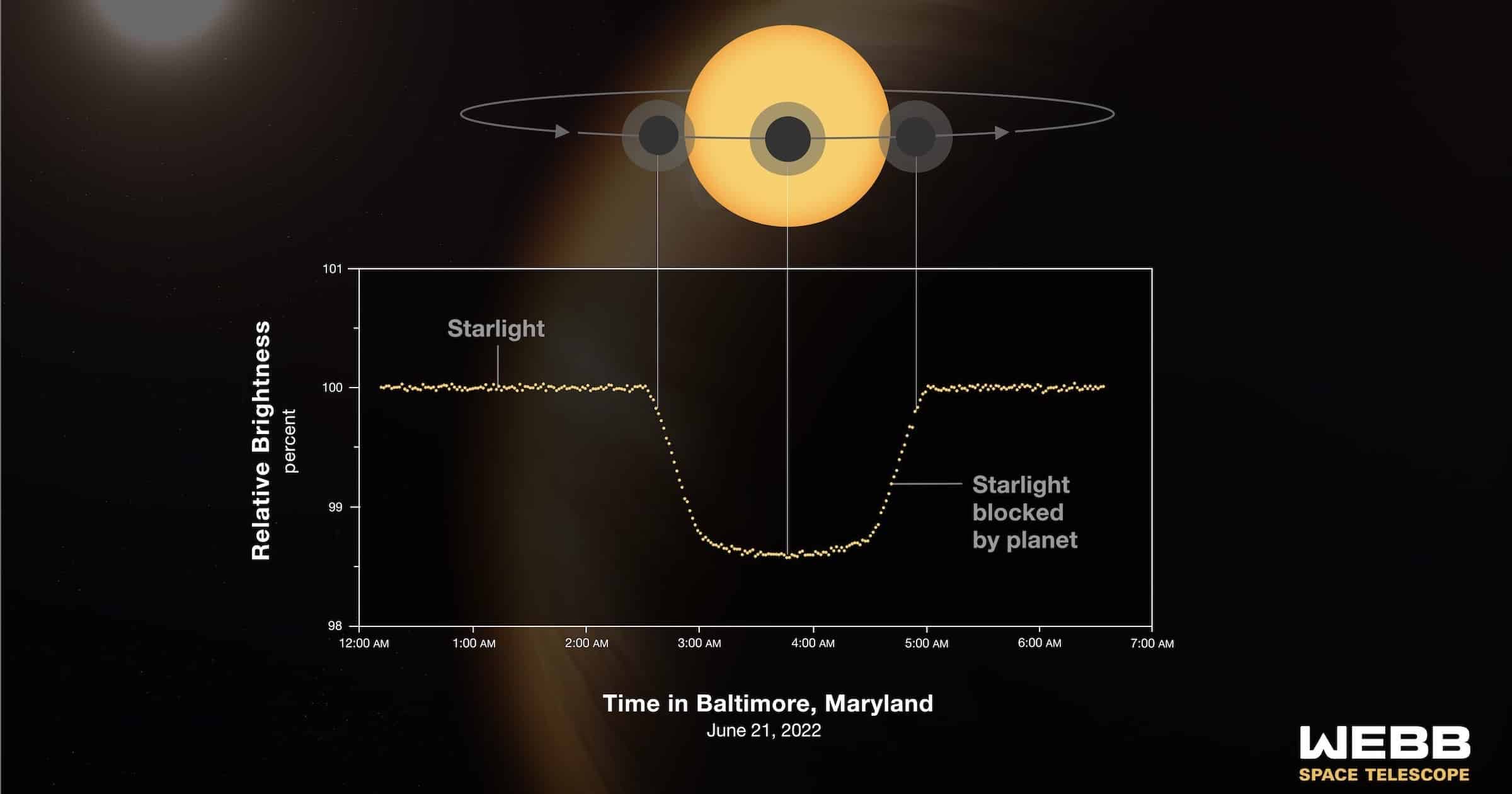 Physics, Earth & Space
Physics, Earth & Space
Exoplanets: Searching for “Earth 2.0”

In recent exoplanet news:
- The James Webb Space Telescope continues to surprise scientists. For WASP-96b (above), an exoplanet more than 1,000 light years away, we learn this:
With the combined forces of its 270-square-foot mirror, precision spectrographs, and sensitive detectors, Webb has — in a single observation — revealed the unambiguous signature of water, indications of haze, and evidence for clouds that were thought not to exist based on prior observations. The transmission spectrum of the hot gas giant WASP-96 b, made using Webb’s Near-Infrared Imager and Slitless Spectrograph, provides just a glimpse into the brilliant future of exoplanet research with Webb. [Emphasis added.]
LATEST NEWS, “WEBB: WASP-96B THE MOST DETAILED SPECTRUM OF AN EXOPLANET ATMOSPHERE” AT ASTRONOMY NOW
- China is now focusing on a search for a planet like Earth:
Most likely, such a planet does exist, but in the relatively nascent field of exoplanet research, no one has yet been able to find it. That is not for lack of trying. Kepler spent nine years searching over 150,000 stars, and while it detected almost 3,000 new exoplanets, none met the criteria of being Earth-sized in the habitable zone of a sun-like star. Bad luck might have played a role — the new paper’s authors even calculated that statistically, Kepler probably should have found at least one Earth-sized planet in a habitable zone.
ANDY TOMASWICK, “AN AMBITIOUS PLAN TO FIND EARTH 2.0” AT UNIVERSE TODAY (JULY 21, 2022)
A team led by Jian Ge at the Shanghai Astronomical Institute thinks that, using their method — Earth 2.0 Telescope, or ET — they can locate at least 17 such planets. Overall, they hope to find 30,000 new exoplanets, including 5,000 rocky ones like Earth. Their ambitious space mission will be located at the L2 Lagrange Point, beside the James Webb Space Telescope. The paper, by the way, is open access.
Earth 2.0?
- Where land is located on a planet can matter for life, the Royal Astronomical Society says:
A team of researchers at the University of Toronto, have applied a 3-dimensional climate model (ExoPlaSim) to simulated Earth-like planets with two distinct dayside configurations. The first configuration is a circular continent in the middle of the dayside surrounded by ocean. The second configuration is the opposite: a circular ocean in the middle of the dayside with land everywhere else. For both cases, the size of the circle was varied to demonstrate how the planet’s climate depends on land fraction for each of these continent configurations.
Among other things, a planet’s habitability is dependent on its surface temperature and the amount of moisture in its atmosphere. The study models the net precipitation, cloud fraction, and surface temperature across the dayside of the planet for different land configurations.
The results show that both the amount of land, and its configuration can have a large effect on the surface conditions of the planet. For models with similar dayside land fractions but opposing configurations, the average surface temperature can change by up to ~20oC. The results indicate that the amount of water vapour in the planet’s atmosphere heavily depends on the area of ice-free ocean on its surface. Planets with high land fractions have hotter and drier daysides with clouds and precipitation mostly confined to small central areas.
ROYAL ASTRONOMICAL SOCIETY, “THE LIFE PUZZLE: THE LOCATION OF LAND ON A PLANET CAN AFFECT ITS HABITABILITY” AT NEWSWISE(JULY11, 2022)
This finding suggests that planets where most of the surface is ice-free water are better bets for life. On Earth, 71 percent of the surface is (mostly) ice-free water. Also, Earth has the right mass to keep water while getting rid of gases that are toxic to life.
Here’s the ExoPlaSim planet modeling system if you are interested in installing and trying it.
Read the rest at Mind Matters News, published by Discovery Institute’s Bradley Center for Natural and Artificial Intelligence.
